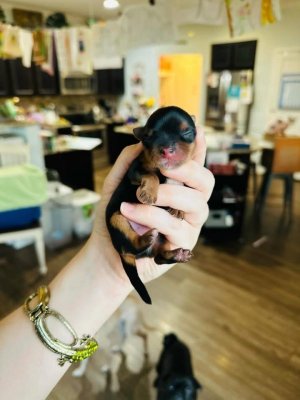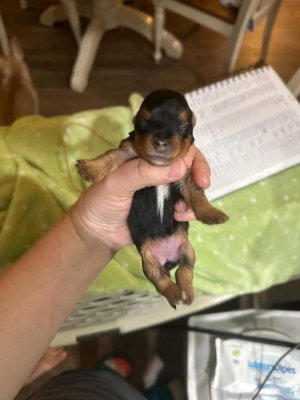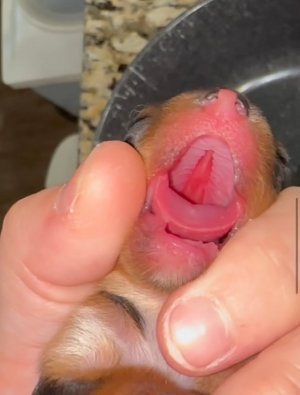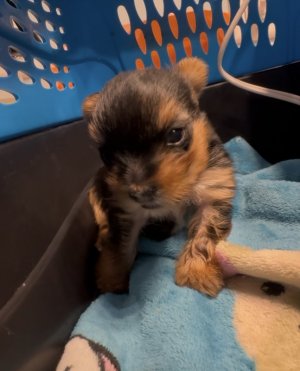Ronni
Well-known Member
- Location
- Nashville TN
I’m going to foster, possibly adopt, this medical needs yorkie,18 days old right now, born with a cleft palate and being tube fed by Paige, my daughter, till he can tolerate solids.
If you know me from the forum, you know I foster, but this is the first time a yorkie has crossed my path. Though I’m very knowledgeable in the care of tiny dogs in general, I’ve never had a yorkie before, nor actually cared for a cleft baby, so this will be a learning experience for me.
This little guy is very healthy other than his cleft, he’s gaining weight well, his medical needs are fully addressed and monitored by a team of vets and techs and his current medical expert foster, Paige
He’s charting to be about 4 lbs as an adult though right now he’s only about 9 oz. He’s prognosis is guardedly optimistic, cleft babies face many challenges.
But nonetheless he’s a tiny little firecracker!

His cleft palate

If you know me from the forum, you know I foster, but this is the first time a yorkie has crossed my path. Though I’m very knowledgeable in the care of tiny dogs in general, I’ve never had a yorkie before, nor actually cared for a cleft baby, so this will be a learning experience for me.
This little guy is very healthy other than his cleft, he’s gaining weight well, his medical needs are fully addressed and monitored by a team of vets and techs and his current medical expert foster, Paige
He’s charting to be about 4 lbs as an adult though right now he’s only about 9 oz. He’s prognosis is guardedly optimistic, cleft babies face many challenges.
But nonetheless he’s a tiny little firecracker!


His cleft palate



